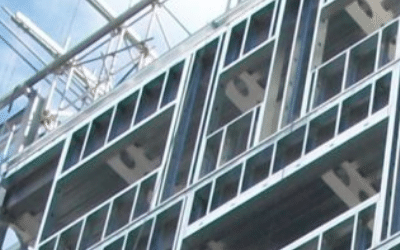The Building Safety Bill, currently making its way through Parliament, aims to implement all of the recommendations set out in Dame Judith Hackitt’s “Building a Safer Future” report, and in places goes further. The reforms include a more stringent approach to the design and construction of high-rise buildings, clearer responsibilities on designers to ensure these buildings are safe, and new measures so that everyone doing design or building work is competent to carry out that work in line with building regulations.
People working on the design of a high-rise building, from the development of a planning application through to building regulations approval will need to understand the building’s intended use, correctly identify the risks, and own and manage those risks to determine the safety of a building.
There will be a requirement to record and provide evidence of decision-making during the design process, and a need to be engaged throughout a building project to handover to the end client. Prepare now for these changes.
Peter Baker, Chief Inspector of Buildings at the Health and Safety Executive, said:
“Designers have a strong influence on safety and standards, particularly during the very early planning and design stages of a building project. Their decisions not only affect the safety of those carrying out the building work, but also those maintaining, using, or living in a building after it is built.
“I encourage designers to act now and prepare for the more stringent regulatory regime. HSE will continue to work with the building design industry and related businesses to support them to deliver safe and high-performing buildings and ensure that residents of high-rise buildings are safe, and feel safe, in their homes now and in the future.”
Colin Blatchford, Operational Policy Lead for Gateways and Building Control at HSE, said:
“Everyone involved in the design of high-rise buildings must take a proactive approach to managing building safety from the earliest stages of the design process. These changes are coming. Those involved need to plan ahead through correctly identifying, taking ownership and managing the risks – ensuring key decisions are recorded throughout the process.
“Once the Building Safety Bill becomes law, there will be a requirement for a safety case report when a building is completed and occupied. It is important to consider this at the early design stage for your clients and future residents’ safety.
“Building safety changes are coming and will affect everyone involved in a high-rise building project beyond its design. We urge that you act now.”
Responding to this statement, FIS CEO Iain McIlwee said:
“The Building Safety Bill offers a huge lever for change, but it needs to start with a recognition that design is detailed through the construction process and for the detailing to be effective we need the specialist contractors and manufacturers involved (and contracted) at a far earlier stage. Even with tighter regs, we will still see problems being resolved on the fly in difficult circumstances and under severe time pressure on site rather than designed out of the process at an earlier stage. This has to be about changing not just the way we design and build, but vitally how we procure the services, respect specialist knowledge and collaborate far more effectively through the project.”
You can find out more about the implementation of the Building Safety Bill here

